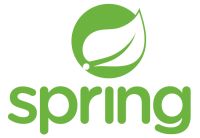Discover our in-depth guide to Spring Framework + Maven. We explore the details of integrating Maven with Spring Framework.
More...
Welcome to our comprehensive guide on integrating Maven with Spring Framework for seamless application development. In this guide, we will provide an introduction to the Spring Framework and Maven and discuss the benefits of integrating these two technologies. By leveraging Maven's powerful features and combining them with the flexibility of Spring Framework, developers can streamline their projects, manage dependencies efficiently, and enhance overall development productivity. Let's explore how to integrate Spring Framework + Maven.
At first, we will provide a brief introduction to the Spring Framework and Maven, followed by an overview of their key features. We will then move on to discuss the benefits of using Maven with Spring Framework and provide a step-by-step guide on how to set up a Maven project with Spring Framework. We will also cover how to integrate Spring Framework with Maven and build and package Spring Framework applications using Maven. Furthermore, we will discuss how to manage dependencies, test Spring Framework applications, achieve continuous integration and deployment, and optimize application performance using Spring Framework and Maven.
Let's get started.


What is Spring Framework?
In our comprehensive guide to integrating Maven with Spring Framework, we will begin by providing an overview of the Spring Framework. Spring is a popular Java framework that provides developers with a powerful set of tools for building enterprise-level applications. It was originally created to simplify Java development and promote good programming practices.
One of the primary features of Spring Framework is dependency injection, which allows for loose coupling between objects in the application. This means that objects are not tightly bound to each other, which makes the application more flexible and easier to maintain over time.
In addition to dependency injection, Spring Framework also utilizes inversion of control, which is a design concept that promotes the idea of letting a framework manage the flow of control in the application. This provides developers with a high degree of flexibility and allows for greater control over complex application architectures.
Check out our blog post on spring framework versions if you're curious about the Spring versions. For more information about Spring Framework you can also check Useful Links for Spring Framework here.
Introduction to Maven
Maven is an open-source tool that simplifies the software development process by managing the project's build, dependencies, and documentation.
With Maven, you can easily manage complex projects, including managing dependencies, building projects, and providing a structured approach to software development. Its primary role revolves around automating the build process, generating documentation, and managing project dependencies.
Maven is an essential tool when it comes to building, managing, and deploying complex software projects. Using Maven ensures that software development projects are structured and managed, leading to faster and more efficient project delivery.
1. The Benefits of Using Maven
Maven is a powerful build automation tool that saves developers time. It automates tedious processes, such as compiling code, running tests, and building deployment packages, freeing up valuable time to focus on more critical tasks. Maven is also an excellent project management tool due to its ability to manage dependencies and provide a structured approach to software development.
Maven simplifies the development process by ensuring that all dependencies are resolved and downloaded automatically. This means that developers do not have to worry about manually adding dependencies, as Maven will handle everything automatically.
2. Maven and Build Automation
Maven is a build automation tool that automates the process of compiling code, running tests, and building deployment packages. With Maven, you can easily execute complex workflows and tasks, enabling you to focus on developing high-quality software.
Maven also offers a range of plugins and integrations, making it easy to work with other tools and technologies, such as Spring Framework, Hibernate, and more. You can integrate Maven into your existing build process, or use it as a standalone tool to manage your software projects.
3. Maven and Dependency Management
Maven is a powerful dependency management tool that enables developers to add and manage dependencies easily. With Maven, you can specify dependencies in a simple and straightforward manner, and Maven will automatically download and manage those dependencies for you.
Maven deploys the dependencies in a local repository, which makes it easy to share dependencies across different projects. This allows developers to reuse code and avoids the need for them to manually manage libraries of dependencies.

Benefits of Using Maven with Spring Framework
When it comes to building enterprise-level applications, Maven with Spring has emerged as a powerful combination, providing a range of benefits to developers and organizations alike.
1. Streamlined Development
One of the primary benefits of using Maven with Spring Framework is streamlined development. Maven provides a structured approach to project management, simplifying the process of creating, building, and deploying applications. This, in turn, enables developers to focus on building features and functionality, rather than worrying about the underlying infrastructure of their applications.
2. Dependency Management
Another significant advantage of integrating Maven with Spring is enhanced dependency management. With Maven, developers can easily manage project dependencies, ensuring that all necessary libraries and frameworks are included. This, in turn, reduces the risk of conflicts or errors arising from incompatible dependencies, saving valuable time and effort for developers.
Spring Framework without Maven | Spring Framework with Maven | |
|---|---|---|
Dependency Management | Manual management of dependencies | Automated management of dependencies through pom.xml |
Build Tool | Ant or Gradle | Maven |
Project Management | Manual management of the project structure | Automated management of the project structure through pom.xml |
The above table highlights the key differences between using Spring Framework without Maven and with Maven. As you can see, the automated dependency and project management provided by Maven can significantly simplify the development process when working with Spring Framework.
Setting Up a Maven Project with Spring Framework
Setting up a Maven project with Spring Framework is a straightforward process that can be accomplished with a few simple steps. In this section, we will guide you through the process, including configuring the pom.xml file and adding necessary dependencies.
Step 1: Create a new Maven project
The first step is to create a new Maven project. This can be done using the command line or within an integrated Java development environment (IDE) such as Eclipse or IntelliJ.
Step 2: Add Spring Framework dependencies
The next step is to add the Spring Framework dependencies to the pom.xml file. This file is used to define the project structure, dependencies, and build settings.
Step 3: Configure Spring Framework
The final step is to configure Spring Framework. This involves creating a Spring configuration file, which specifies the beans that make up the application context.
Integrating Spring Framework with Maven
Integrating Spring with Maven can seem daunting at first, but with the right tools and techniques, it can be a highly efficient process. Maven plugins are an essential element when it comes to integrating these two technologies. Using the correct plugins can help automate many manual tasks and streamline the integration process.
One of the most widely used Maven plugins for integrating Spring Framework is the Spring Boot Maven Plugin. It provides a powerful framework for developing and packaging Spring Boot applications for deployment. With this plugin, developers can easily package their application as a self-contained executable JAR file. Additionally, the plugin allows for easy configuration of Spring Boot applications, including setting up embedded servers and data sources.
1. Maven plugins for Spring Framework
Other popular Maven plugins used for integrating Spring Framework include the Maven Cargo Plugin, which is used for deploying web applications to containers, and the Maven Dependency Plugin, which provides a robust solution for managing project dependencies. Additionally, the Maven Surefire Plugin is used for running unit and integration tests, while the failsafe Plugin allows for running integration tests separately from unit tests.
2. Spring dependencies and Maven
Maven is also used extensively for managing Spring Framework dependencies. The Spring Framework consists of multiple modules, each with its own set of dependencies. By using Maven, developers can easily manage and update these dependencies, ensuring their applications are always up-to-date with the latest version of the Spring Framework.
Spring Module | Maven Dependency |
|---|---|
Spring Core | org.springframework:spring-core |
Spring Web | org.springframework:spring-web |
Spring AOP | org.springframework:spring-aop |
Managing dependencies can be time-consuming and complex, but with Maven, developers can automate the process and ensure seamless integration of Spring Framework with their projects.

Building and Packaging Spring Framework Applications with Maven
As we have seen in the previous section, Maven provides a powerful set of tools for managing dependencies, building projects, and packaging applications. In this section, we will focus on how to use Maven to build and package Spring Framework applications, including generating executable JAR files.
1. Configuring Maven for Spring Framework
Before we begin, we first need to ensure that our Maven project is properly configured for Spring Framework. This includes adding the necessary dependencies to our pom.xml file, as well as configuring Spring Framework settings as needed.
Once we have our project set up for Spring Framework, we can proceed to use Maven to build and package our application.
2. Generating an Executable JAR File
The most common way to package a Spring Framework application with Maven is to generate an executable JAR file. This type of file includes all of the necessary dependencies and resources, making it easy to deploy and run on any compatible system.
Managing Dependencies with Maven
One of the major benefits of Maven is its powerful dependency management capabilities. By leveraging the Maven Central Repository, developers can easily manage project dependencies and handle transitive dependencies effectively.
The Maven Central Repository is a vast collection of project dependencies, libraries, and plugins that can be integrated seamlessly into Maven-based projects. It provides a centralized resource for developers to access and manage the dependencies required for their projects.
When managing dependencies with Maven, it is important to understand transitive dependencies. Transitive dependencies are dependencies that are required by a project's dependencies. For example, if project A depends on project B, and project B depends on project C, then project C is a transitive dependency of project A.
Maven automatically handles transitive dependencies, downloading and including them in the project as needed. This makes managing dependencies much easier and more efficient, as developers do not have to manually include every single dependency required by their project.
1. Maven Central Repository
The Maven Central Repository is the default repository used by Maven for storing and accessing project dependencies. It contains over 4 million artifacts and is constantly growing.
To include a dependency from the Maven Central Repository, you need to specify the dependency in your project's pom.xml file. Maven will then automatically download and include the dependency in your project.
2. Custom Repositories
In addition to the Maven Central Repository, developers can also use custom repositories to store and manage project dependencies. Custom repositories can be useful for managing dependencies that are not available in the Maven Central Repository.
Testing Spring Framework Applications with Maven
Testing is a critical component of the development lifecycle, allowing developers to detect and fix bugs early on. Spring Framework provides robust support for testing, and Maven offers a range of testing plugins to streamline the process.
Maven Testing Plugins
Maven offers several testing plugins that can be used to automate testing in Spring applications. Some popular ones include:
Plugin | Description |
|---|---|
surefire | Runs unit tests and generates reports |
failsafe | Runs integration tests and generates reports |
junit | Allows for integration with JUnit testing framework |
Automated Testing
Automated testing is a powerful technique for ensuring the quality of Spring Framework applications. By using testing frameworks such as JUnit or TestNG, developers can run automated tests as part of their build process.
Automated testing has several advantages, including:
- 1Reducing manual testing efforts
- 2Enabling rapid feedback on changes
- 3Detecting bugs early in the development lifecycle
- 4Improving overall application quality
Integration with Maven makes automated testing even easier, allowing developers to run tests as part of their build process and generate reports automatically.
Importance of Testing
Testing is a critical component of the development process, allowing developers to ensure the quality of their applications and catch errors early on. By testing regularly and automating the process, developers can reduce the risk of bugs and ensure that their applications meet the required standards.
Moreover, testing can uncover insights into how an application behaves in different scenarios, revealing opportunities for performance optimization and feature enhancements. By making testing a priority, developers can build robust, reliable applications that meet the needs of their users.

Continuous Integration and Deployment with Maven and Spring Framework
Continuous integration and deployment (CI/CD) have become critical practices to ensure productivity, agility, and quality. At its core, CI/CD is about automating and streamlining the entire software delivery pipeline, from code changes to production deployment. By integrating Maven with Spring Framework, developers can achieve a robust and efficient CI/CD pipeline that improves collaboration, reduces risk, and accelerates time-to-market.
Maven and Spring Framework Integration
The integration between Maven and Spring Framework is seamless and straightforward. Maven provides a powerful build and project management tool that simplifies project setup, manages dependencies, and automates the build process. On the other hand, Spring Framework offers a flexible and lightweight Java framework that supports a wide range of application types, from web to mobile to cloud.
By combining the strengths of these two technologies, developers can effectively manage the entire software development lifecycle and ensure timely releases with minimal manual intervention. The integration between Maven and Spring Framework enables developers to:
- 1Automate build, test, and deployment processes
- 2Manage dependencies and ensure consistency across environments
- 3Facilitate collaboration and communication between team members
- 4Optimize performance and scalability of applications
CI/CD Pipeline with Maven and Spring Framework
The CI/CD pipeline with Maven and Spring Framework involves a series of automated steps that cover the entire software delivery process, from code commit to production deployment. The pipeline typically comprises the following stages:
Stage | Description |
|---|---|
Code commit | Developers commit code changes to the repository, triggering the build process. |
Build | Maven builds the application, runs tests, and packages the executable code. |
Deploy to staging | The build artifacts are deployed to a staging environment for testing and verification. |
Automated testing | The automated tests are run against the application in the staging environment. |
Deploy to production | If all tests pass, the build artifacts are deployed to the production environment. |
The CI/CD pipeline with Maven and Spring Framework is highly customizable and can include additional stages or steps, depending on the project requirements. The pipeline can also leverage different tools and services, such as Jenkins, Travis CI, or AWS CodePipeline, to automate and orchestrate the different stages.
Benefits of CI/CD with Maven and Spring Framework
The benefits of CI/CD with Maven and Spring Framework are numerous and significant. Some of the key advantages of adopting a CI/CD approach include:
- 1Reduced risk of errors and defects
- 2Accelerated time-to-market
- 3Improved collaboration and communication among team members
- 4Increased confidence in product quality and reliability
- 5Enhanced ability to scale and adapt to changing requirements
By leveraging the integration between Maven and Spring Framework and implementing a robust CI/CD pipeline, developers can streamline their software development process and focus on delivering high-quality, innovative solutions for their customers.
Performance Optimization with Spring Framework and Maven
In order to ensure that our Spring Framework applications are running optimally, it is important to utilize the performance optimization techniques that are available to us. In this section, we will explore some of the most effective strategies for optimizing the performance of Spring Framework applications using Maven.
1. Utilizing Spring Framework Caching
One of the most effective methods for improving application performance is by implementing caching techniques. In Spring Framework, we can utilize caching through the use of the @Cacheable annotation. This annotation can be applied to methods within our application, allowing us to store the results of expensive operations in cache. This can help to reduce the amount of time it takes to perform these operations, resulting in improved application performance.
Optimizing Maven Builds
Another important aspect of performance optimization is ensuring that our Maven builds are running efficiently. There are several strategies that we can use to achieve this, such as utilizing parallel builds and excluding unnecessary dependencies. By optimizing our Maven builds, we can reduce the amount of time it takes to build our applications, allowing us to iterate more quickly and ultimately create better software.
FAQ
What is Spring Framework?
Spring Framework is a popular Java framework that provides a comprehensive infrastructure for developing enterprise-level applications. It offers various modules for different functionalities, such as dependency injection and inversion of control, enabling developers to build robust and scalable applications.
What is Maven?
Maven is a powerful build automation and project management tool that simplifies the development process. It helps manage project dependencies, compile source code, run tests, and create executable JAR files. Maven provides a structured approach to software development and enhances productivity for developers.
What are the benefits of integrating Maven with Spring Framework?
Integrating Maven with Spring Framework offers several advantages. It simplifies project setup, improves dependency management, and enhances overall development efficiency. Maven provides a standardized way to manage dependencies, making it easier to resolve and update libraries used in Spring projects.
How do I set up a Maven project with Spring Framework?
To set up a Maven project with Spring Framework, you need to create a new Maven project using the appropriate archetype. Configure the pom.xml file with the necessary dependencies, including the Spring Framework libraries. Once set up, you can start developing your Spring application within the Maven project structure.
How do I integrate Spring Framework with Maven?
To integrate Spring Framework with Maven, you need to include the necessary Spring dependencies in your pom.xml file. Maven will then download and manage these dependencies, allowing you to use Spring Framework in your project seamlessly. Additionally, you can leverage Maven plugins to enhance the integration and streamline the development process.
How do I build and package Spring Framework applications using Maven?
Building and packaging Spring Framework applications with Maven is straightforward. Maven can create executable JAR files for your application, which can be easily deployed and run. By configuring the pom.xml file correctly and specifying the appropriate packaging options, you can generate deployable artifacts for your Spring applications.
How does Maven help with managing dependencies?
Maven provides robust dependency management capabilities. It allows you to declare project dependencies in the pom.xml file, and it automatically downloads and resolves these dependencies from remote repositories, such as the Maven Central Repository. Maven also handles transitive dependencies, ensuring that all required libraries are included in your project.
How can I test Spring Framework applications using Maven?
You can test Spring Framework applications using Maven by leveraging various testing plugins available. These plugins enable automated testing, including unit tests, integration tests, and functional tests. By configuring the appropriate testing dependencies and plugins in your pom.xml file, you can ensure comprehensive testing coverage for your Spring applications.
How can Maven and Spring Framework be integrated into a continuous integration and deployment pipeline?
Maven and Spring Framework seamlessly integrate into a continuous integration and deployment (CI/CD) pipeline. Maven can be used to build and package the Spring applications, while CI/CD tools, such as Jenkins or GitLab CI/CD, can be configured to trigger the build process on code updates. This enables continuous integration and deployment of the Spring applications, ensuring efficient and automated release cycles.
How can performance optimization be achieved with Spring Framework and Maven?
Performance optimization with Spring Framework and Maven involves various techniques. Spring Framework provides caching mechanisms that can be configured to improve application performance. Maven enables build optimization, where you can configure the build process to eliminate unnecessary steps and reduce build time. Additionally, tuning application configurations and optimizing resource usage can further enhance performance.
We hope you found our article on Spring Framework + Maven useful. If you use the Java programming language for enterprise software solutions and require assistance or additional senior Java developers to your team, please do not hesitate to contact us. Let us know, and hire Bluebird Java developers for your projects from Bluebird!
Other useful blog posts about the Spring Framework:
1. Useful Links for Spring Framework
2. Spring Framework Versions: Feature list by version
3. Spring Interview Questions and Answers
4. Spring Framework vs Spring Boot
To be the first to know about our latest blog posts, follow us on LinkedIn and Facebook!
